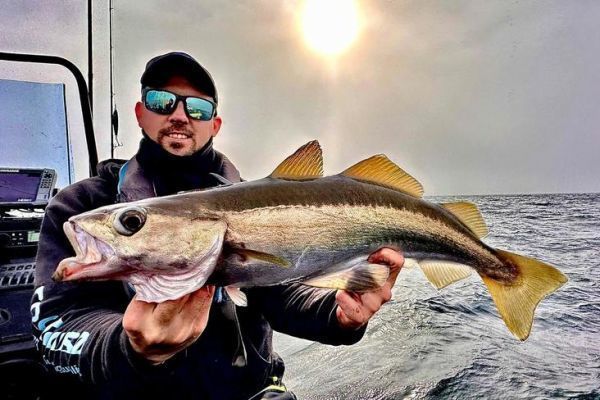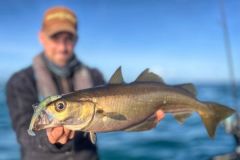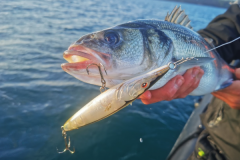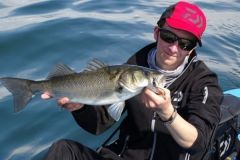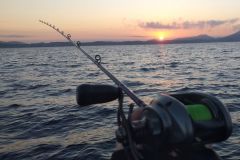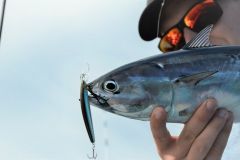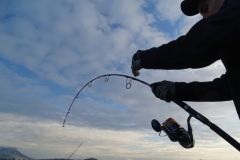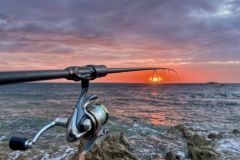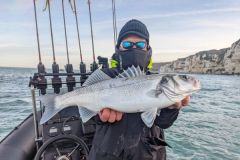Locust fishing is making a comeback in winter
During the summer, when the water is warmer, these fish leave the coastal areas and head for the depths. You'll find them on deep wrecks, for example, or at depths of over 30 metres.
Since late autumn, pollack have returned to coastal plateaus, much to the delight of recreational anglers. They reach shallower areas, at around 15 meters.

So-called "lighter" techniques are possible.
I fish them mainly with a jig. These metal lures offer many advantages over soft lures.
Simple animation for beginners
Jigs are the simplest of all lures. Many anglers probably started out using these lures on the end of a submachine gun.
It is perfectly suited to beginners. Its high density means that it descends rapidly and limits the banner in the line. Its animation is very simple and doesn't require a great deal of technical skill. At least for beginners, because as we'll see in a second article, it can become technical as soon as you want to tackle crowded positions such as wrecks.
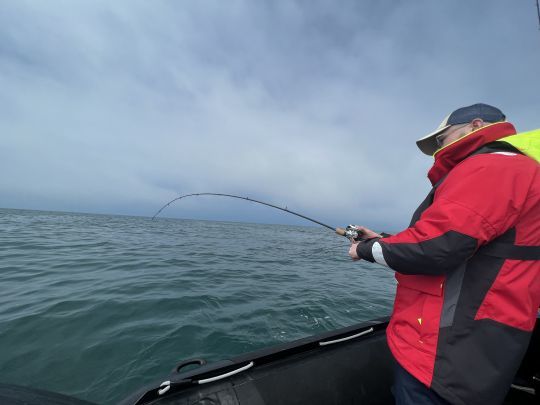
A lure suitable for a wide range of positions
We'll go into this in more detail later, but there are many different places to fish locations (rocky plateaus, wrecks, gravel pits, etc.) . The advantage of the jig is that it is versatile and suitable for wherever you decide to target these species. Available in different weights, you can use it in different depths and with varying degrees of current.
An easy-to-build box
While the choice for soft lures is extremely vast, whether in shape, weight or color, for jigs it's more limited. And that's no disadvantage.
You can select 2 or 3 models in a range of weights and colors. I think that with a dozen jigs ranging from 50 to 120 grams, you'll be able to cope with almost any situation.
I'll present my personal selection later. Even if some models are very expensive, it's possible to find excellent products for between 5 and 10 euros, depending on the weight.
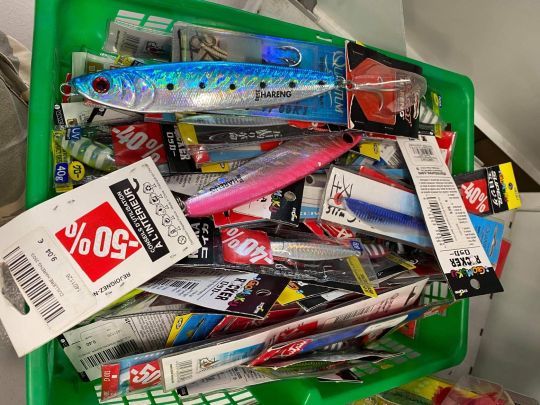
Another advantage is that there is no association like with soft lures (lead head + body) . Here, as soon as it comes out of its packaging, it's ready to fish. This can facilitate the initiation of beginners who may find the assembly of soft lures complex or hesitate over the size of lure to associate with a lead head.
A lure that selects more than just the yellow spot
The advantage of using a jig is that you multiply your chances of catching a fish. This is undoubtedly the lure that catches the greatest number of species.
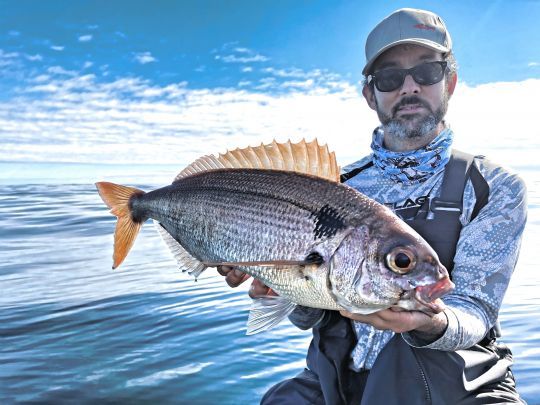
For want of blackbirds, eat thrushes, as the saying goes. Unfortunately, if the yellowlegs aren't biters, you'll still get a few hits on the day of your outing, and you're sure to pull out other species.

 /
/ 


